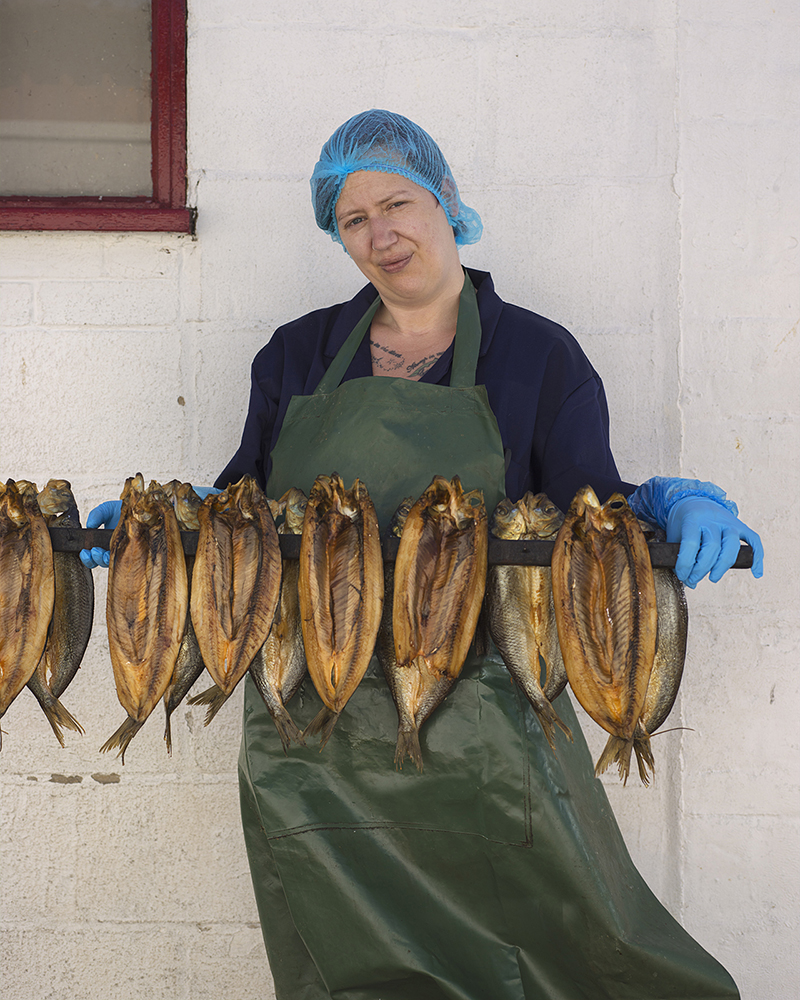
The work of three photographers- Hyung S. Kim, Phil Mello and Craig Easton- are on display in New Bedford, along the harbor front walkway on Macarthur Boulevard at the State Pier, and alongside the YMCA downtown, on Union Street between Water Street and North Second Street.
Trained in swimming and underwater harvesting, the Haenyeo need to be physically conditioned with regard to high lung capacity, and the ability to withstand water pressure and frigid temperatures. Their matriarchal ethics and sustainable fishing practices are widely recognized as a prime example of eco-feminism.
As Sung Yongja, one of the divers noted: “The sea is more valuable than my life. I will be a Haenyeo again when I am reborn.”
Mello has documented the local women who work on the waterfront, the unsung fish cutters, purveyors, welders, lumpers, inspectors, auctioneers,and more, who continue to help make New Bedford the premiere fishing port in the United States, with an annual monetary value of $451 million, with sea scallops making up 89% of that haul.

Easton’s “Fisherwomen” series is a presentation of photographs of the “Herring Lassies,” a unique band of female-only migratory workers in the United Kingdom, who travel from port to port on land, mirroring the herring fishermen out on the boats.
The tradition of “going to the herring” was passed from mother to daughter for generations, working on the quay. In modern times, they are mostly unseen behind closed doors, laboring in fish cutting facilities, processing plants and smokehouses all around the coastal UK.
There is one photograph by Easton of a woman noted only as “Louise of Aberdeen” in Scotland. She is bent over in hearty laughter, which can only be understood as a pure, unmitigated fit of joy. I imagine that however hard these women work, be it in Asia, Europe or New Bedford, they too contain that joy. And like Louise, they sometimes let it fly.
“Harvesters of the Deep: Portraits of Fisherwomen from South Korea, America, and the United Kingdom” is on display aside the YMCA and on the State Pier until Oct. 17. Additional photographs can be viewed by going to www.DATMA.org.
